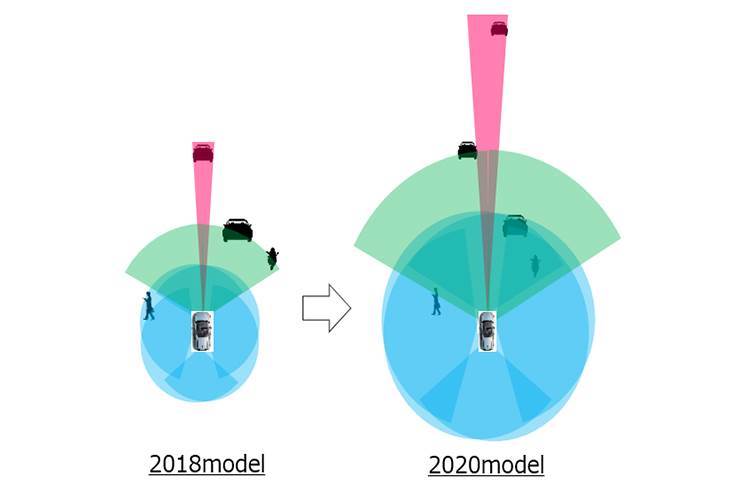Pioneer Corporation and Pioneer Smart Sensing Innovations Corporation (PSSI), a subsidiary of Pioneer, have developed a mass-production model of 3D LiDAR sensor, which is a much compact size, an extended measurement distance and improved performance The sensor is expected to be equipped in advanced autonomous driving vehicles (supporting level-three and above autonomous vehicles) and will be released in first half of FY2020, and started a full-scale production from autumn 2020.
3D-LiDAR sensors use laser light to detect and accurately measure the distance of objects and can ascertain three-dimensional information related to the surrounding environment in real-time, they are regarded as an indispensable key device for the realisation of level-three and above autonomous vehicles (conditional automation). Pioneer and PSSI have been providing various companies with verification models from 2017 to 2018, and continued verifying performance through demonstration testing and other activities.

The 3D-LiDAR sensor, which is to be mass-produced in autumn 2020 has adopted ‘Micro Electric Memory Systems (MEMS)’ mirror-based scanning method. In addition to offering high resolution, it has been downsized to less than 20 percent of previous model while achieving 1.5 to 2 times the measurement distance. There are three types of sensors with different angles of view and measurement distances, and an angle type, making it possible to accommodate customer needs by combining the different types. Software that allows the devices to be used for object detection, vehicle position estimation and other applications has also been developed and can be supplied to customers.

Apart from applications in autonomous driving and fleet vehicles, Pioneer and PSSI is also looking to incorporate it for security and traffic monitoring applications. It will be showcased at CES 2020 which will commence from January 7 next year.
High measurement performance and improved measurement distance surpassed ‘2018 model’
MEMS mirror-based raster scanning method enables detection to be made at high temporal and spatial resolutions. Moreover, with an improved measurement distance of 1.5 to 2 times over ‘2018 model’ and other advancements, high-precision detection ability has been achieved for autonomous driving vehicles and a wide range of other applications.
Downsizing and durability for in-vehicle installation
By integrated architecture, it downsized to less than 20 percent of ‘2018 model’, allowing it to be installed in vehicles. In addition to MEMS mirror-based raster scanning method, the Companies have leveraged its unique know-how as a manufacturer of automotive devices to equip the ‘2020 Model’ with excellent durability.
Three types of 3D-LiDAR with different field of view and measurement distances
Three types of sensors with different measurement distances for ‘Short Range’, ‘Medium Range’, and ‘Telescopic’ ,which is for long distance measurement will be available. Additionally, for ‘Short Range’ and ‘Medium Range’ sensors, there is an angle type that combines two 3D-LiDAR. By combining each of these sensors, Pioneer and PSSI can propose systems that support to various customer needs.
Usable for non-automotive utilisation
Pioneer and PSSI also expect that the excellent measurement performance of the sensors will also be utilised in a wide range of non-automotive scenarios, such as security and traffic monitoring, ships, agricultural and construction machinery or robotics. Pioneer and PSSI will suggest a range of solutions that realise a safe and secure society.
/news-international/pioneer-develops-massproduction-model-of-3dlidar-sensor-44969 Pioneer develops mass-production model of 3D-LiDAR sensor Pioneer’s 3D-LiDAR sensor, which is to be mass-produced in autumn 2020 is offering high resolution, has been downsized to less than 20 percent of previous model while achieving 1.5 to 2 times the measurement distance. https://www.autocarpro.in/Utils/ImageResizer.ashx?n=https://www.autocarpro.in/userfiles/1218ba98-0c79-4395-9421-5037b9f50f93.jpg
